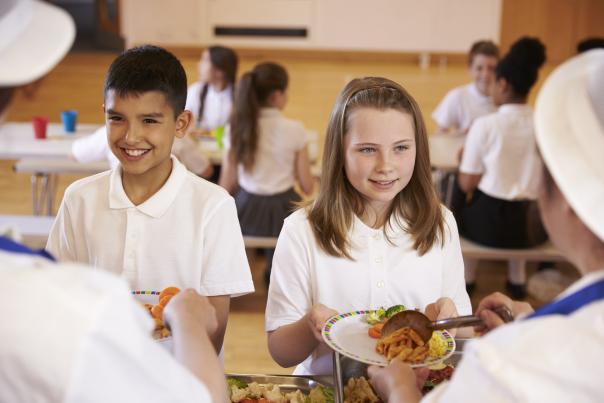
Schools are working hard to meet nutritional standards set by governments around the UK to provide an enjoyable and healthy food experience for pupils.
And evidence suggests that school meals are far healthier than packed lunches for younger children.
Despite this, though, only a minority of primary school children eat a school meal all of the time. Encouraging more children to eat a school meal could play a role in tackling the high rates of childhood obesity and also having educational benefits.
While cost is a significant factor, it isn’t the only solution. In London, the introduction of universal free school meals for 4-7 year-olds increased uptake significantly, though not universally. Similarly, in Scotland, despite free meals for 4-9 year-olds, 28% of children still opt for packed lunches.
Over the past two years, Nesta has conducted extensive research in Wales, exploring ways to increase free school meal uptake. We have seen the passion and great ideas school caterers already bring to this challenge.
And our ‘School Meals - Count Me In Month’ pilot in six primary schools that made school lunches the default option, resulted in higher uptake in five of the six schools compared to non-participating schools in the same council areas.
Through this work, we gained a deep understanding of both the barriers to getting more children eating free school meals, but also learned a series of lessons that we think could help all schools.
Here are six strategies that could drive school meal participation across the UK:
Peer power
In a Nesta survey, 39% of parents whose children were eligible for free school meals but did not regularly eat them, said friends of their child bringing packed lunches was an important influence on their own decision. And in our school meal uptake pilots, we found that success was likely in part down to the whole school participating.
A recent VegPower survey suggested the influence of peers on school meal uptake was particularly strong for older primary schoolchildren (8 -11 year-olds), for whom uptake of school meals is typically lower than for younger children.
Schools and catering teams can use the power of peer influence by allowing pupils to sit with friends who are having a packed lunch, sharing with parents and children the numbers of other pupils eating school meals, or by holding special school meal theme days, weeks or months where everyone is encouraged to eat a school meal. Schools can also leverage the sway of influential peers; in one of our pilot study schools the head boy led an assembly championing school meals.
Clear school leadership
Many parents told us that they want their children to eat school meals and that having a clear steer from school leadership would make persuading their children to eat a school meal easier. Setting the expectation in school communications and providing school staff training to be clear and consistent on their messaging that school meals are the preferred choice may be enough to make a substantial difference.
Variation in lunch menus
Lack of menu variety is a key barrier to greater school meal uptake. The Veg Power survey revealed nearly a third of parents said their child would eat school meals more regularly if there was more variety.
Offering alternatives and rotating menu options more frequently could help keep school meals interesting to pupils. As this can be a logistical challenge for catering teams, one solution is make-your-own salad and pasta bars, allowing students to customise their meals.
Involve pupils in menu design
Considering the views of pupils and parents on the menu creates important buy-in and support for school meals, as well as ensuring needs and desires of pupils are met. In a survey we did with Welsh and Scottish parents with children eligible for free school meals, they said that alongside having more than three daily lunch options, student involvement in menu creation would have the greatest influence on their child eating school dinners.
Research from Scotland has shown that letting students help design lunch menus has led to successful theme days like a ‘Globetrotters’ initiative featuring dishes inspired by other countries and cultures.
Clear rules on packed lunches
It’s hard for school meals to compete with packed lunches, which often consist of chocolates, crisps and sandwiches. According to the recent Veg Power survey, 40% of children reported that they prefer packed lunches.
Reinforcing guidelines for the contents of packed lunches such as banning chocolates and fizzy drinks or mandating a portion of fruit or vegetables could encourage families to make healthier choices or even switch to school meals. The Food for Life programme has published a useful template as guidance for schools interested in developing their own packed lunch policy.
Make lunchtime enjoyable
The length of a lunch break has been linked to meal choices, with children who have more time to eat reporting better nutritional outcomes. Extending the lunch period, staggered lunch schedules, optimising the cafeteria layouts, pre-ordering hot meals in the morning or even an outdoor catering van to take pressure off the main dining hall are all ways of giving children more time to eat.
Dining hall environments can also play a role. In 2017 the School Transformation and Redesign of Cafeterias (STARCafé) project saw several changes made to the dining halls of 26 schools, including: adding new seating options such as booths, coffee tables and sofas, and updating wall decor. After just a year, participation in school lunches had increased by 20% and student attitudes towards school meals had also improved.